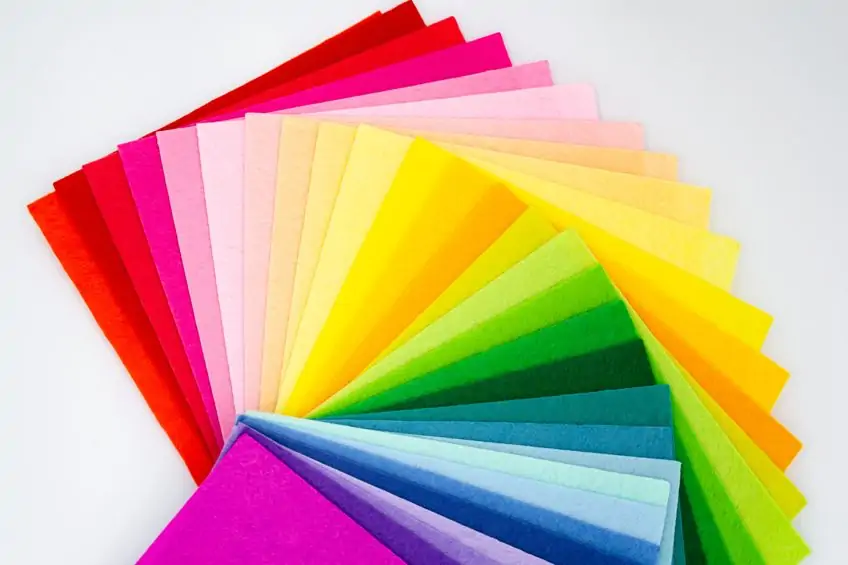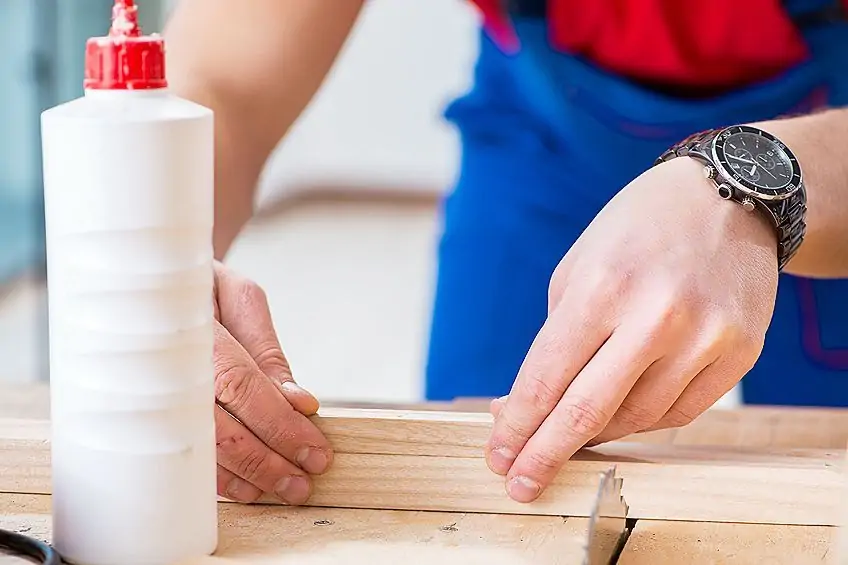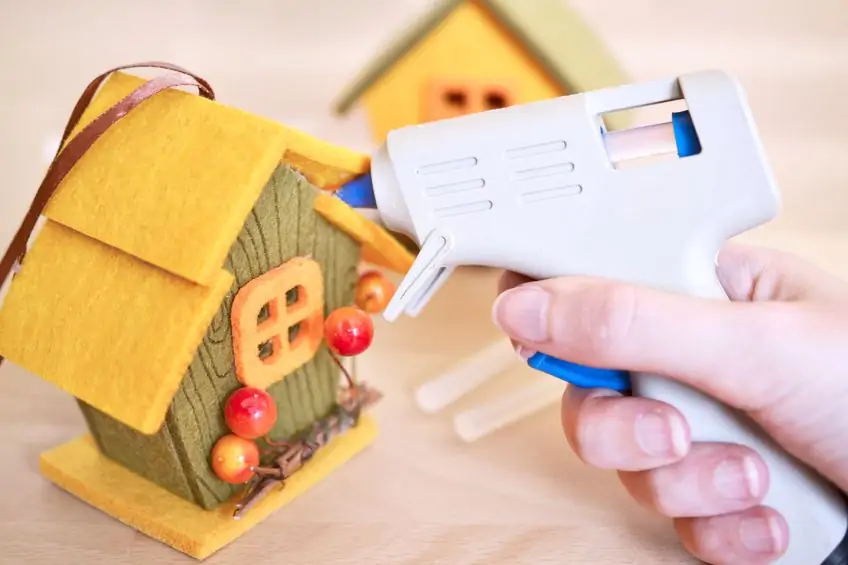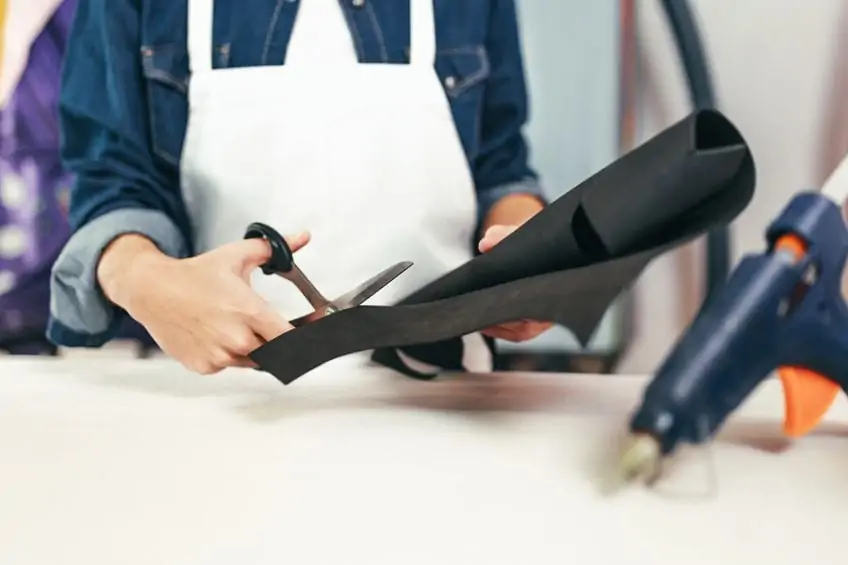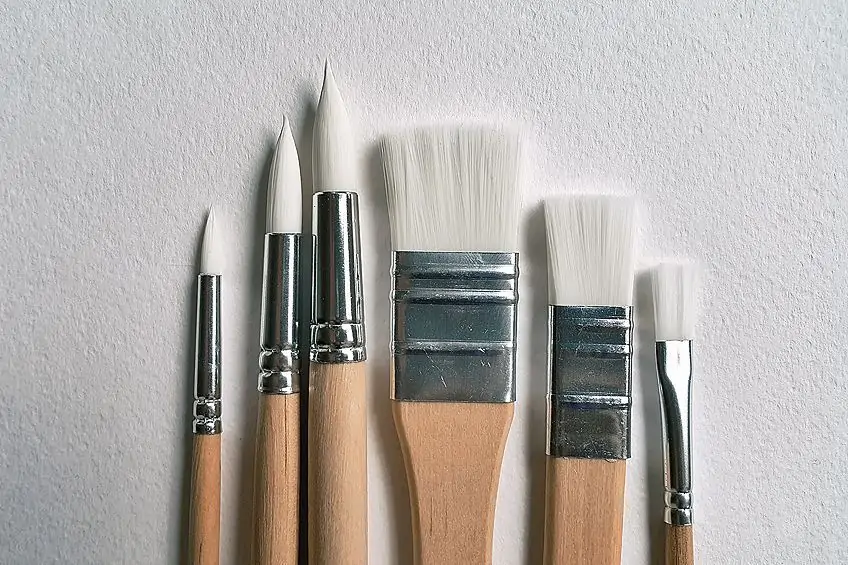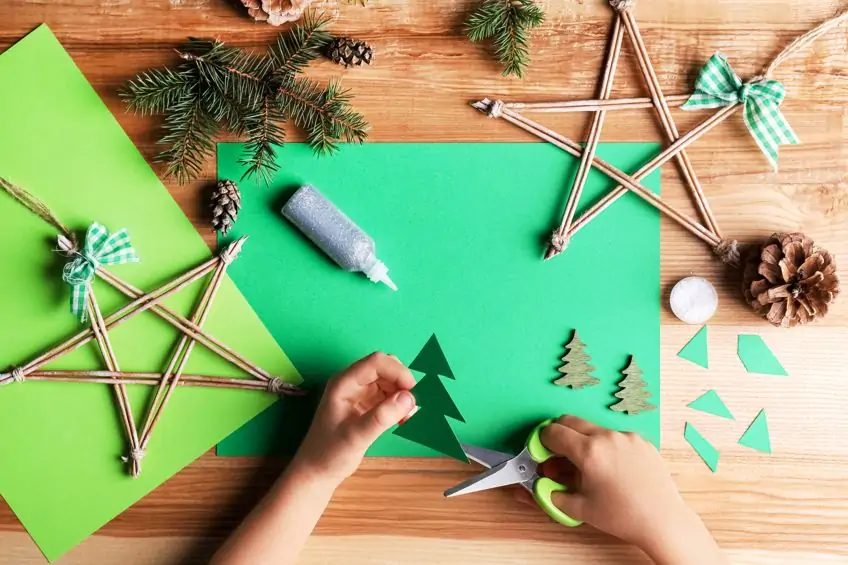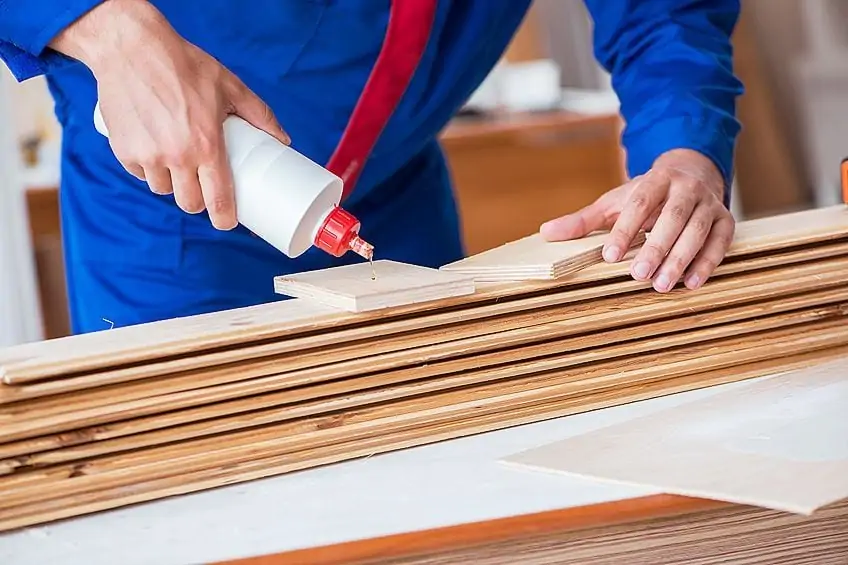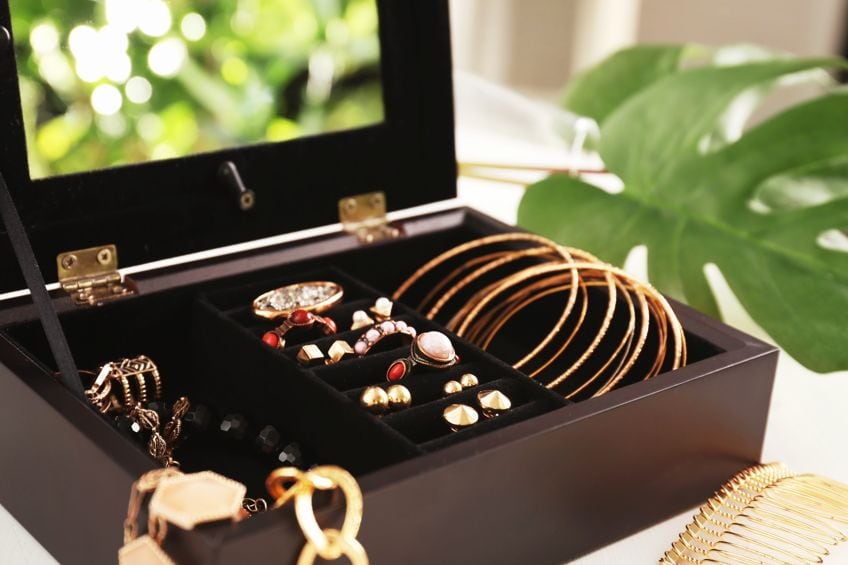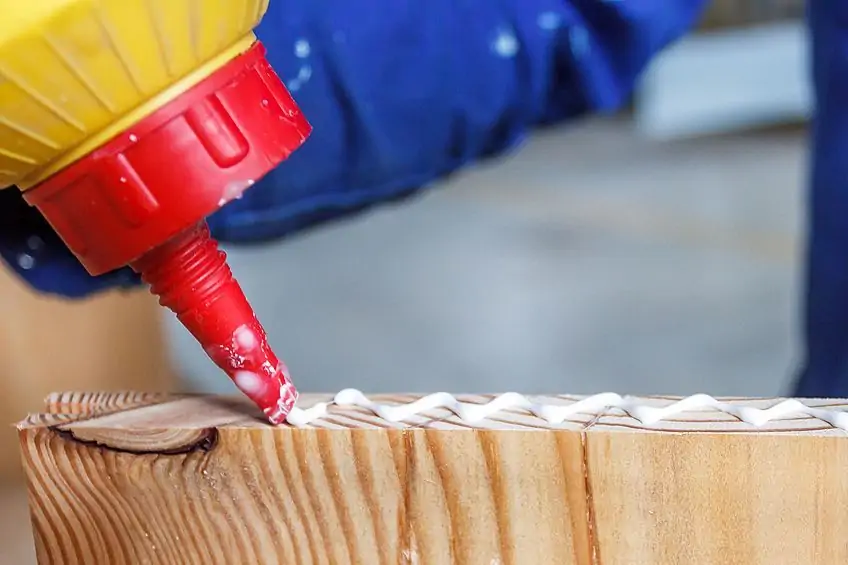How to Glue Felt to Wood – The Best Adhesive for Felt and Wood
This post may contain affiliate links. We may earn a small commission from purchases made through them, at no additional cost to you. You help to support resin-expert.com
When it comes to gluing felt to wood, it is done more with do-it-yourself craft projects. For example, wood projects like lining the inside of a jewelry box or drawer, which can increase its aesthetic quality. Gluing felt to wood can also be used very successfully when attaching felt to the legs of your chairs or other furniture, eliminating friction and preventing scratches on your wooden floor. However, the job can be quite challenging, especially when you try gluing felt to wood which is a hard surface. So, we will be discussing further how to glue felt to wood.
Table of Contents
- What Type of Material is Felt?
- What to Look Out For in the Best Adhesive for Gluing Felt to Wood
- The Best Glue for Felt to Wood
- Types of Glue That Work Well for Bonding Felt to Wood
- A Tutorial on How to Glue Felt to Wood
- How to Remove Felt From Wood
- Useful Tips on How to Attach Felt to Wood
- Frequently Asked Questions
What Type of Material is Felt?
To start, you need to understand the material you will be working with. Felt is a non-woven fabric that consists of water, natural fibers, and soap. Once the natural fibers are agitated and pressed together, it produces your felt fabric. Felt is not manufactured or used for its appearance or texture but rather for its versatility in terms of durability, strength, and as a lightweight fabric. Felt is also 100 percent biodegradable, repels moisture, dirt and also resists fire, and as such, is a very family-friendly fabric.
What to Look Out For in the Best Adhesive for Gluing Felt to Wood
Tacky glue is the best adhesive for felt to wood; another alternative is permanent glue like super glue or spray glue if you are working on a larger project. By using the correct glue for your project, you will guarantee that the felt and the wood will not be damaged, and the bond created will be effective. So, it is vital to choose the best adhesive for felt to wood.
Choosing the Correct Glue
There are numerous types of craft glues on the market that can be used to stick anything together but the type of glue you select depends on the wood surface you have and the type of felt you are working with. So, there are certain elements to consider before purchasing glue.
We will now deal with these aspects, which will help you buy the right glue for your project.
Drying Time
If you are very busy and you do not have the time to sit around and wait for the glue to dry, a slow drying time will hold up your project. In this case, you should consider buying glue that dries quickly. Some of the glues can dry in a matter of seconds, while other types need to be left overnight to dry properly.
Easy of Use
The glue you choose must be easy to apply and should not cause problems by sticking to everything and clogging in the dispenser. For this reason, some of the glues come with a brush, a nozzle, or a squeeze applicator. So, you need to choose which one that is best suited for your project to avoid any unnecessary problems.
Child Safety
If you are busy with a project that involves your kids, then you need to take into consideration buying a child-friendly adhesive. That means the glue needs to be easy to work with, non-toxic, and must be very easy to clean up afterward. This is important as you do not want to cause damage to their skin or health.
Appealing Visual Finish
All glues do not dry in the same way and only show their effectiveness after they are dry. Also, you do not want the glue to be visible after you have completed your project, so you need to choose a glue that is clear once it has dried. You might want to make sure it does not turn yellow or opaque once it has dried.
You also do not want the felt to become hard and brittle after it is dry.
Adhesive to Avoid
You need to avoid buying the ordinary white craft glue as it is too thin, making bonding difficult. The glue can also soak through the felt layers. The result will be a project that is not very appealing as you will end up having dark and rough patches where the glue has soaked through.
The Best Glue for Felt to Wood
Since there are quite a few options when it comes to types of glue, some might work on the felt but not so great on wood. Other adhesives might work great on wood but could damage the felt or not adhere the felt at all. Below are a few product recommendations for the best adhesive for felt.
Best Tacky Wet Glue for Gluing Felt to Wood: ELMER’S Tacky Glue
The Elmer’s Tacky Glue is a great glue for all your craft projects, especially when gluing felt to wood. This glue also gives a very strong bond when applied to other mediums. It has a very fast drying time and is effective when used on semi-porous or porous surfaces. The glue boasts of a non-run formulation, so you will have no problems with spills. This glue also dries clear, is acid-free, and provides you with a strong bond.
- Ideal for home decor projects, holiday ornaments, and decorations
- Strong, wet tack with a no-run formula for multipurpose projects
- The glue dries clear for a crisp and neat finish on your project
If you make a slight mess, no problem as it is very easy to wipe away with some water even if you have already applied it to your felt. Another benefit of this glue is that one small bottle will go a long way and help with finishing your project.
PROS
- Non-run formulation
- Cleans easily with soap and water
- Provides a strong bond
- Dries clear and will not yellow
- Very versatile
- Water-resistant
CONS
- The bond may not last for a long time
Best Super Glue for Sticking Felt to Wood: GORILLA Super Glue Gel, Clear
The Gorilla Super Glue Gel will give you an extremely strong bond. It has a non-run gel formulation which guarantees it will remain only on the area that you have applied it, and it will not run over the whole surface area. This makes it ideal to use on any vertical surface. The glue dries clear and is almost invisible when applied to your felt project.
- No run control gel formula that is great for use on vertical surfaces
- The anti-clog cap helps keep the glue from drying out between uses
- Specially formulated for increased impact resistance and strength
The Gorilla super glue dries super-fast, within 10 to 45 seconds which is exceptional for craft glue. The glue is very versatile and can be used on felt, metal, wood, paper, leather, ceramics, and much more. The product comes with an anti-clogging cap, which prevents the glue from drying out in the tube, making it available for use over and over again. When using it to glue felt, it is advisable to only use it for smaller areas where it will give you a better resistance in strength.
PROS
- Fast drying
- Dries clear
- Non-run formulation
- Super strong bond
- Very versatile
CONS
- Is flammable
- Strong odor when wet
- Toxic
Best Hot Glue Stick for Sticking Felt to Wood: ADTECH Mini Hot Glue Stick
The AdTech Mini Hot Glue Stick is an ideal product to use for sticking felt to wood as it is quick-drying and bonds the felt almost immediately, within 30 seconds. You get 28 inches long glue sticks that are 8 inches thick and longer than usual, which will last longer and enable you to complete your project without having to change the glue stick often. This glue stick will dry clear and leave no yellow stains behind, so you do not have to worry about the glue being visible after it dries.
- The glue dries clear for neat and flawless finishes on all projects
- The glue dries very quickly and creates an incredibly strong bond
- These mini hot glue sticks are non-toxic and safe to use
The glue sticks are designed to work with varying temperatures, this means they can work with high or low-temperature settings. This is a major advantage, as it gives you the opportunity of applying the glue to different types of material without having to reset the temperature each time. In addition, when you work with your glue gun at a lower temperature, it helps to not damage the felt. Although these glue sticks are non-toxic, you are using heat to melt the glue. Therefore, it should not be used by younger children on their own, they need some adult supervision.
PROS
- Dries clear does not yellow
- Fast drying
- Glue sticks are extra long
- Gives a quick strong bond
CONS
- As the glue stick needs heat to work it is not safe for small children to use on their own
Best Spray Glue for Sticking Felt to Wood: ALEENE’S All Purpose Tacky Adhesive Spray
The Aleenes All Purpose Tacky Adhesive Spray is the best spray adhesive to use for bonding felt to wood. This glue dries crystal clear with no yellowing, so you will not notice the glue after you are finished. It also dries fairly fast in around 2 minutes but stays wet for one minute, giving you time to move any part of your project before it sets properly.
- Perfect for adhering flat surfaces to flat surfaces like felt and wood
- This wonderful adhesive spray dries crystal clear for neat work
- The tacky spray stays wet for 60 seconds allowing adjustments
The glue is very versatile and can adhere to many different types of surfaces like wood, felt, foam, paper, ceramics, fabrics, and much more. This glue is ultra-tacky and will provide a strong permanent bond. It is also non-toxic and child-friendly, perfect for all of those DIY family projects. The glue is not only ideal for small areas but can also be very effective when applied to larger surfaces as well.
PROS
- Dries fairly fast in about 2 minutes
- Dries crystal clear, leaving no yellow stains
- Gives a permanent strong bond
- Is non-toxic
- Child-safe
- Versatile can be applied to numerous surfaces
CONS
- One user found that it did not stay stuck but come loose
Types of Glue That Work Well for Bonding Felt to Wood
We have just given some good glue brands that will work well when gluing felt to wood. However, some of these brands may be unfamiliar to you. You may even have some glue in your garage that you can use. To make the types of glue easier to understand, we have compiled a table listing the types of glue and if they can be used successfully when gluing felt to wood.
| Types of Glue | Can They Be Used for Gluing Felt to Wood? |
| Strong PVA Wood Glue | ✘ |
| Craft PVA Glue | ✔ |
| Tacky Glue | ✔ |
| Wet Cement | ✔ |
| White School Glue | ✘ |
| Fabric Glue | ✘ |
| White Craft Glue | ✘ |
| Hot Glue Sticks | ✔ |
| Superglue | ✔ |
| Spray Glue | ✔ |
A Tutorial on How to Glue Felt to Wood
The process of gluing felt to wood can be a rather frustrating and messy job. Felt can be difficult to stick down and can soak up all the glue. Sometimes, you may also find that your work area is very small and there seems to be very little room for you to work in, like the inside of a jewelry box. No need to stress as you can follow a few simple instructions that can overcome all these problems. This supply list is very important to ensure that your felt is applied correctly; it fits well, lays flat, and sticks properly to your wood surface.
Prepare Your Supplies
Make sure that you have all the necessary supplies you will need for gluing felt to wood. There is nothing more frustrating than to find you have forgotten one or more necessary items when you are halfway through, and then you have to stop and leave your project and go and fetch what you still need. So, you should have all of the following items close at hand before you begin.
Felt Material
Like most textile fabrics, felt tends to stretch when you work with it, this means that high-quality felt will have less stretch in it than low quality felt. So, be sure to only buy good and reputable brands of felt for your project. Then consider the felts application, for example, will the felt be uncovered in the sun? If this is the case, you again need to buy good quality felt as the sun or light can cause the color of the felt to fade over time. Lastly, consider the thickness of the felt and ensure the thickness you purchase will be the right one for your project. In this regard, good quality felt you can purchase is billiard cloth.
A billiard cloth will reduce all of the above-mentioned complications.
The Glue
The type of glue you can use will all depend on the size of your project, for small projects or areas, wet cement will be the best option, and for large areas, spray adhesive will work where any overspray is not an issue. If you are working on very small projects that will not have much tension or stress, then Elmer’s white glue is suitable.
Brushes
If you are applying Elmer’s glue or any wood contact cement, then the best brush to use is a foam brush. These brushes are very cheap and can be bought at any hardware store; they come in various sizes and are disposable after use. If you decide to buy a more expensive brush that can be reused, we suggest you also buy some paint thinners to clean the brush once you have finished gluing the felt.
Removable Tape
If you have decided to use spray adhesive for your project, then you will need some removable tape. This you can apply to the surfaces you do not want the spray adhesive to adhere to. Once you have finished using the spray adhesive, you can remove the tape before you apply the felt.
Rollers and Scissors
Once you have applied the glue to the surface and stuck the felt down, you will have to use the roller to flatten or smooth the felt removing any wrinkles. The roller is best used in large areas, and for smaller areas, you can make use of an old credit card or a scraper or you can even use the palm of your hand. A pair of scissors will help to cut the felt to the shape or form you need.
To remove any excess felt, you can preferably use an old razor blade.
Selecting the Correct Felt
Most of the problems encountered when gluing felt to wood comes from the type of felt used. As felt stretches when handled, you need to ensure you use only high-quality felt. The lower grade felt tends to stretch more and can easily tear when gluing the felt to your wood surface. By using high-quality felt, you will be able to handle it better, it is also more durable, and is much easier to cut and glue without causing any damage.
Clean the Felt
This does not mean a complete detailed cleaning, however, you do not want to glue felt on your wood surface that has any dirt or stains on it, so just check it over and ensure that there is no dirt or stains visible. When you do find dirt or stains, the best way to clean it will be to steam it lightly. Make sure the steamer is set to low, and do not go too close to the felt.
Select the Correct Glue
There are several options available, but it mostly depends on what type of wood surface you are going to apply the felt to. If it is a fairly large surface, then we suggest you use spray glue as it can cover the whole wood surface evenly. However, you will have to use removable tape on the surfaces where you do not want the glue to adhere, as you do not have much control over the spray pattern of the glue.
If you are busy with a smaller surface that needs several felt pieces, then Elmer’s Glue is a good option. This type of glue adheres well to wood surfaces and is also able to get into those nooks and crannies very easily. This aspect is very important as you need a good bond so that you will not have to worry about the felt peeling off over time.
Wet cement is the ideal option when you want to glue felt to a wood surface. This type of glue provides a good bond and is also very easy to work with. Wet glue is a good option to stick felt to wood irrespective of the size of your project as it can cover the whole area when you apply it.
Cutting Your Felt
The next step would be to cut your felt to the right size to cover the whole surface. This is an easy job if the area is straightforward, but if the area is more difficult and has different angles and corners, then it may be necessary to use a template. You can use some cardboard to make your template, ensure that it is the exact size of the wood surface you want to cover with your felt. Then take your template and lay it over your felt and cut your felt to the size of the template, this should give you a piece of felt that is exactly the correct size.
Applying the Adhesive
You can use a foam brush to apply the glue as these are cheap, and you can just throw them away when you are finished. This means there is no need for cleaning brushes. However, you can use a paintbrush, which you will have to clean after your finished gluing, using some solvent or paint thinners.
When applying the glue, it is advisable to apply it to both the felt and the wood surface. If you apply just a light or thin layer that should be enough to give you a strong bond. Spread the glue, especially to the edges. If you are making use of spray adhesive, it is much easier to spray the wood and the felt surface to the correct thickness, this will give you a good bond.
Laying the Felt
Now that the surfaces have been prepared, you can begin to lay the felt onto the wood surface, ensuring that you line it up perfectly. Then flatten and smooth it out with your hands, making sure it covers the entire wood surface, trying not to stretch the felt. You can use a roller to ensure you make a good bond with the wood and avoid any bubbles or wrinkles. If there are any corners or angles, use a scraper to make sure the felt properly adheres to those difficult places.
Trim the Overlapping Edges of the Felt
Allow the glue time to set properly, then when you are satisfied that the felt is secure, use your scissors or razor blade to remove any uneven or overlapping felt pieces.
However, if you have cut the felt accurately to the exact size, there should be no need for trimming the edges.
How to Remove Felt From Wood
We have already discussed, in detail, how to glue felt to wood. However, what if your cupboard drawer or a jewelry box has old felt still attached and it looks awful, maybe starting to peel off? The old felt must be removed before you can glue a new piece in its place. How do you remove the old felt first?
You can remove most of the loose excess old felt, using your hands. Then, using a putty knife you can scrape the rest of it off. This takes a lot of effort, and you need to ensure you get right under the loose edges of the felt. Straighten the knife so it is flat against the wood and carry on scraping until all the loose pieces are off. Make sure you get into all the corners and remove as much of the thicker felt as possible.
Next, you need to remove the felt that remains. You can use a corner cat sander for this, it is a sander shaped in such a way, making it easy to sand right into the corners. Attach your 60-grit sandpaper to the sander and go back and forth, alternating between the sander and your knife. This process can take a while to complete, but you need to ensure you get all the old felt off until you have a smooth surface left.
You can now take your vacuum cleaner to get rid of all the dust and pieces of felt. Make sure you do this job outside as it can make quite a mess. You can now follow the steps above and apply the new felt to your wood surface.
Useful Tips on How to Attach Felt to Wood
Gluing felt to wood helps to protect your wood from scratching or staining. Felt is ideal for this purpose as it is a non-woven fabric and will not unravel as many of the other woven fabrics do. This allows you to work with confidence. Below are a few tips when dealing with how to attach felt to wood.
- Always make use of the highest quality felt. This grade of felt lasts much longer, provides a smooth finish on your wood surface, and can also be easily cut as well as being heat–resistant
- Once you have glued the felt to the wood, you need to apply pressure to make sure the glue is evenly dispersed and remains bonded. It will help if you put a piece of wax paper over your felt and then put a heavy object on top
- Apply only a thin layer of glue to the felt as well as to the wood before you press it down. Remember, apply the glue evenly on both of the surfaces.
- You should allow the glue sufficient time to set, say for around 5 to 10 minutes, depending on what type of glue is used. Then you can remove the heavy object and wax paper
- Rollers are normally used only when the surface area is large. The roller is used to flatten the felt and smooth out any wrinkles
- If you need to trim the overlay felt after gluing it, you can use scissors. However, make sure the scissors are sharp, giving you a clean-cut edge. You can also use a razor blade.
There are so many exciting crafts that you can create with felt and wood. This article has provided you with all the information you need to get started with your own unique crafts. It is important to buy the right glue for wood and felt, and now that you have that you can have fun and get creative!
Frequently Asked Questions
Can PVA Glue Bond Felt to Wood?
The strong wood PVA (polyvinyl acetate) glue is used to bond wood to wood and will not work well with felt. However, the craft PVA glue works just great with felt.
How Important Is It to Select the Perfect Felt?
The success of your whole project depends on you choosing a high-quality felt, as the low-quality felt tends to stretch and tear and will fade. The lower the quality also makes it much less durable.
Can I Use Hot Glue on Felt?
Hot glue is perfect for felt as it is easy to use, dries fairly quickly, and is very versatile. Hot glue can bond materials like glass, wood, plastic, felt, and metal.
Can You Use Super Glue With Felt?
Super glue is an excellent option for gluing felt to wood as it dries very quickly and gives you a very strong bond. However, it is toxic and is not child-safe.
What Adhesive Does Not Work With Felt?
Several types of glue do not work effectively. These include PVA wood glue and fabric glue. Also, White craft glue or school glue does not work with felt as it does not dry properly and often bleeds through and soaks the felt.


